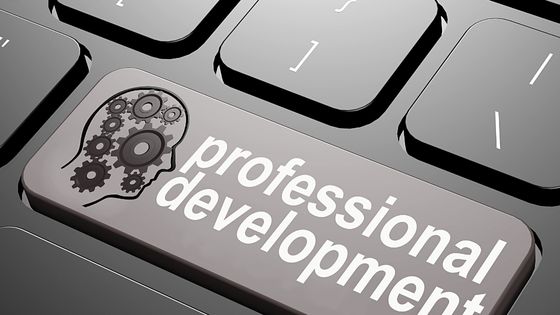Businesses need high-performing teams with a continuous improvement culture in order to keep scaling. Senior leadership needs to outline a framework to measure the success of but most of all enable continuous improvement.

Professional development is a core part of the continuous improvement mindset. After all, if you’re not continuously learning, you can’t be continuously improving. Integrating professional development into your daily practices sets up employees at all levels to adopt life-long processes for improving their technical and interpersonal skills, which is incredibly beneficial to their professional careers and your team’s operations.
How We Embrace Professional Development at Our Agency
When a staff member is first onboarded, part of their training is an exercise in creating a Professional Development plan. These include start, end, and last updated dates, the type of activity (whether it’s a webinar, course, or conference), the dates and estimated time, the skills that’ll be gained from each, and the cost.
Staff then meet with their assigned mentor to review their professional development plan and go through what can be done. This is especially important for any activities that have a cost associated so we can compare what budget is available and what activities can be completed within it.
Mentors will also offer suggestions. For instance, if a content marketer wants to learn more about all aspects of social media marketing, the mentor might recommend the Social Media Marketing World conference. Or, if a strategist wants to move into a managerial role, the mentor may suggest taking courses on setting business unit goals.
We make use of course library subscriptions to help staff access learning material that helps develop the skills outlined in their individual plans. All team members are encouraged to look through these libraries and identify courses that fit the skills they’re looking to develop.
HubSpot Academy and ClickUp University allow our team to learn about topics that are relevant and of interest to them. LinkedIn Learning is also a valuable resource when team members are seeking courses in other topic areas like business management, sales alignment, and people skills.
We encourage our team to set aside time that works best for their schedules to pursue the activities outlined in their professional development plans. For some, this looks like setting aside 5-10 minutes every day to read industry-specific newsletters that come into their inboxes and alert senior leadership of conference registration deals or other opportunities. For others, this may look like allocating a one-hour chunk of time each week to work on the online courses in their professional development plans.
When we have our one-on-one check-in meetings, part of what is discussed is progress toward the professional development goals outlined in their plans and what team members need from senior leadership in order to achieve those goals.
Professional development plans are also factored into performance reviews. A demonstrated commitment to our continuous improvement culture is rewarded, while lengthy discussions occur when little to no professional development activities were undertaken. These expectations are clearly communicated to the team and they are reminded of them during all-staff meetings.
Key Takeaways
- Businesses can’t reap the rewards of high-performing teams if it lacks a continuous improvement culture.
- Course libraries like HubSpot Academy, LinkedIn Learning, and ClickUp University are worthwhile business investments because they enable staff to develop skills at their own pace.
- Allocate some of your annual budgets to professional development so that you can best support your team.
- Professional development doesn’t happen on its own. It requires an ongoing commitment to improvement and will require some encouragement from senior leadership so that all team members get on board.



















